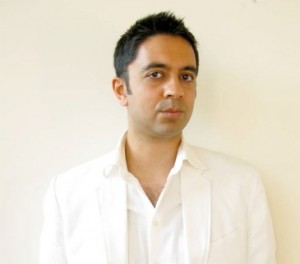Thus far, 2011 seems to be the year of the festival. From Tune Up to Tully Scope and beyond, a wide variety of adventurous outings have been offered in New York. Starting tonight, Symphony Space joins in the fun with their Cutting Edge Concerts New Music Festival.
If each festival has had its own identity – Tune Up reveling in the Park Avenue Armory’s generous space and acoustics, Tully Scope celebrating the diversity of its offerings and its newly remodeled digs – the emphasis of Cutting Edge seems, like so many events at Symphony Space, to be outreach and interaction.
All of the composers will be present at the concerts featuring their music. Each program will include onstage discussion between the featured composers and Victoria Bond. One hopes that meeting composers “in the flesh” and learning about their works firsthand will encourage audience members to approach their works with open minds and ears.
Tonight’s concert includes a world premiere by talented up and comer Hannah Lash, as well as a New York premiere by perennial audience favorite Peter Schickele. Kathleen Supove performs a work by Randy Woolf . Topping it all off is Hidden Inside Mountains, a new multimedia work by downtown luminary Laurie Anderson.
Cutting Edge Concerts New Music Festival is on four Monday evenings at 7:30 pm on
March 28, April 4, April 11 and April 25, 2011 at the Leonard Nimoy Thalia Theatre in
Peter Norton Symphony Space, 2537 Broadway at 95th Street in New York City.
More information about the Festival, including program notes, performer and composer bios, and
Tickets are $20 ($15 for students and seniors).
Program for Monday, March 28, 2011
Hannah Lash: Folksongs (world premiere)
MAYA: Sato Moughalian, flute; Bridget Kibbey, harp, John Hadfield, percussion
MAYA’s appearance is supported by the Jarvis and Constance Doctorow Family
Foundation
Peter Schickele: Music for Orcas Island (NY premiere)
Renee Jolles, violin; Daniel Panner, viola; Maxine Neuman, cello; Kathleen Supove,
piano
Jon Deak: Bye Bye
Sato Moughalian, flute; Kathleen Supove, piano
Randall Woolf: Righteous Babe
Sato Moughalian, flute; Kathleen Supove, piano
Laurie Anderson: Hidden Inside Mountains
Laurie Anderson, video and music
 Steve Reich turns 75 this coming October, and the celebrations have already begun. Later this month is a concert at Carnegie Hall on April 30th. It features the Kronos Quartet in a new piece commemorating a more sombre anniversary: WTC 9/11.
Steve Reich turns 75 this coming October, and the celebrations have already begun. Later this month is a concert at Carnegie Hall on April 30th. It features the Kronos Quartet in a new piece commemorating a more sombre anniversary: WTC 9/11.








